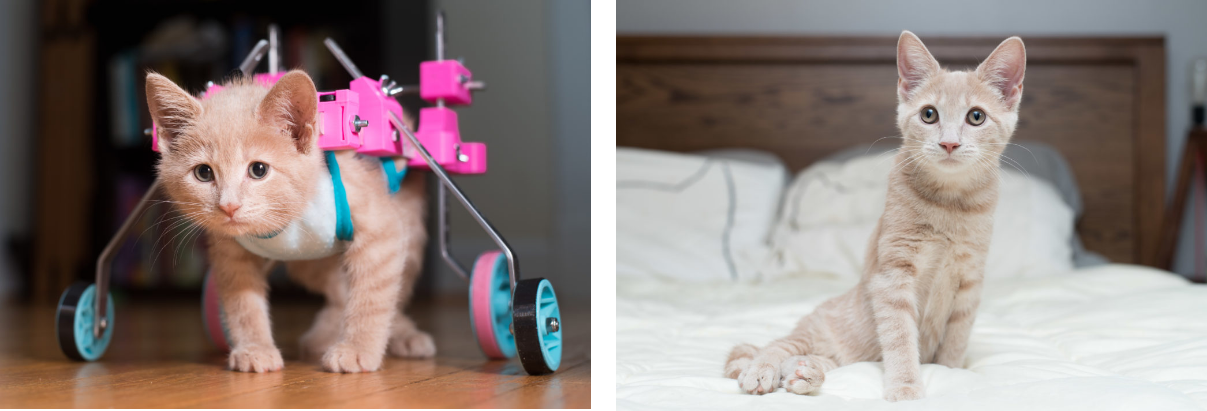



Like clockwork, every early spring through fall it’s “kitten season,” the time of year when lots of teeny tiny little nuggets are brought into this world. While ridiculously cute, very young kittens require a certain level of care that goes beyond traditional cat fostering. For example, they need to be bottle fed and, when super young, require help with urinating and pooping.
Curious about how to foster young kittens, purrch reached out to Hannah Shaw AKA “The Kitten Lady.” An educator, rescuer, author, and kitten foster mom herself, Shaw’s on a mission to help educate the world on this topic. Shaw is also the founder of the Orphan Kitten Club, a 501(c)3 non-profit that provides life-saving programs to young kittens, including a neonatal kitten nursery, a TNR program, and the world’s first grant program specifically funding innovation in kitten welfare. Since 2019, the club's provided more than $700k to shelters and rescues.
Hannah Shaw: Foster programs are a kitten's lifeline! Kittens who are under eight weeks are too young to be adopted, so they need a safe place to grow and thrive during their first weeks of life.
As babies, they rely on humans for feeding, potty support, socialization, and so much more, but unfortunately, most animal shelters do not have the resources to provide this care to kittens around-the-clock. That's why foster parents can make a lifesaving difference by opening their homes to young kittens in need!
It's also important to know that kittens under eight weeks old are immunocompromised, and housing them in a shelter setting can expose them to illness because they are in close proximity to so many other animals. Foster parents can help eliminate their exposure to disease by simply offering up a spare room, bathroom, or even a playpen in their living room to give the kittens a safe place to stay for a few weeks!

Shelters see many orphaned kittens entering their doors, and these motherless babies need to be provided with surrogate care via bottle feeding. Foster parents can choose to work with these non-weaned populations—typically zero to five weeks—and provide them with bottle feeding until they are old enough to wean.
If you're interested in working with bottle baby kittens, I'd recommend watching the Kitten Care Webinar Series and reaching out to your local animal shelter and cat rescue groups to ask about neonatal kitten fostering.

If a kitten is in good condition, is too young to eat on her own, and is in a relatively safe space, you should never scoop her up. Most of the time, when you find a kitten outside, mama is right around the corner. She might even be waiting for you to leave so that she can return! Leave [the young kittens] with mama and make a plan to return once they are weaned and able to be socialized for adoption.
There is an exception. If you find a newborn kitten who looks like she is in bad condition, you may need to intervene right away.
There are so many factors that go into deciding what to do when you find a kitten. I developed the CASA method to help people make the right judgment call when they find a kitten, which encourages people to consider four important factors (CASA): Condition, Age, Situation, and Ability.
No matter what you do, something important to know is that if you're finding kittens outside, that means there is a breeding population of cats in the area. Make a plan to get all the cats spayed and neutered so you can help be a part of the long-term solution!
Before fostering, you'll want to make a plan for which population you'll be fostering, and what kind of time and space requirements they will have. You can choose between moms and babies, orphaned babies, or even older weaned kittens!
Regardless of what population you choose, you don't have to have a ton of space to foster kittens. Even a playpen in your living room will do just fine in most situations. I just created a video about how to make kitten fostering work for your lifestyle and space.
There's nothing more rewarding than helping kittens prepare for adoption!
One important thing you can do is to help them learn appropriate behaviors around playing and biting. Kittens are little micro-panthers who are actively learning how to hunt, so giving them lots of opportunities for interactive play will help them learn how to target their biting and clawing towards toys instead of towards hands and feet. Never play with a kitten with your hands; always direct them to a toy!
Another important part of preparing foster kittens for adoption is getting them on a healthy diet that meets their unique needs as growing babies. I have been feeding my fosters Royal Canin Mother & Babycat for years, and I love that it is so nutritious, palatable, and easy for them to eat as they are weaning.
Whatever food you give them, it's important to make sure that as you prepare young kittens for adoption, you let the adopter know what diet they've been eating so that they can continue that diet in the new home. Kittens are very sensitive to dietary changes, so it's a good idea to get them onto a healthy diet and stick with it!
One of the other hugely important ways you can help a kitten make a healthy transition into a new home is to keep them up to date on vaccines, and to educate the adopter about any future vaccines needed. All kittens should be receiving the FVRCP vaccine starting at six weeks, and repeating boosters every three to four weeks until they are 16 weeks of age. This will protect them against some of the most common viruses, giving them a healthy head start!
Learn more about Hannah Shaw and the Orphan Kitty Club. If you’re fostering a kitten or plan to in the future, let others follow along with their journey on the purrch app, the world’s first and only pet-focused social media app. You’ll also be able to meet other kitten foster parents in our vibrant, rich, and wag-happy community of pet enthusiasts.

